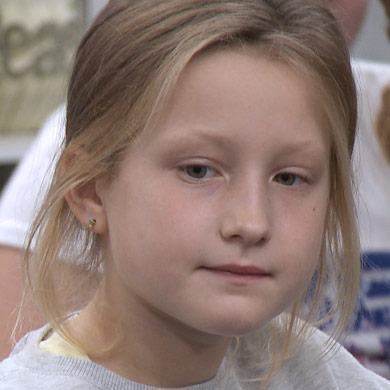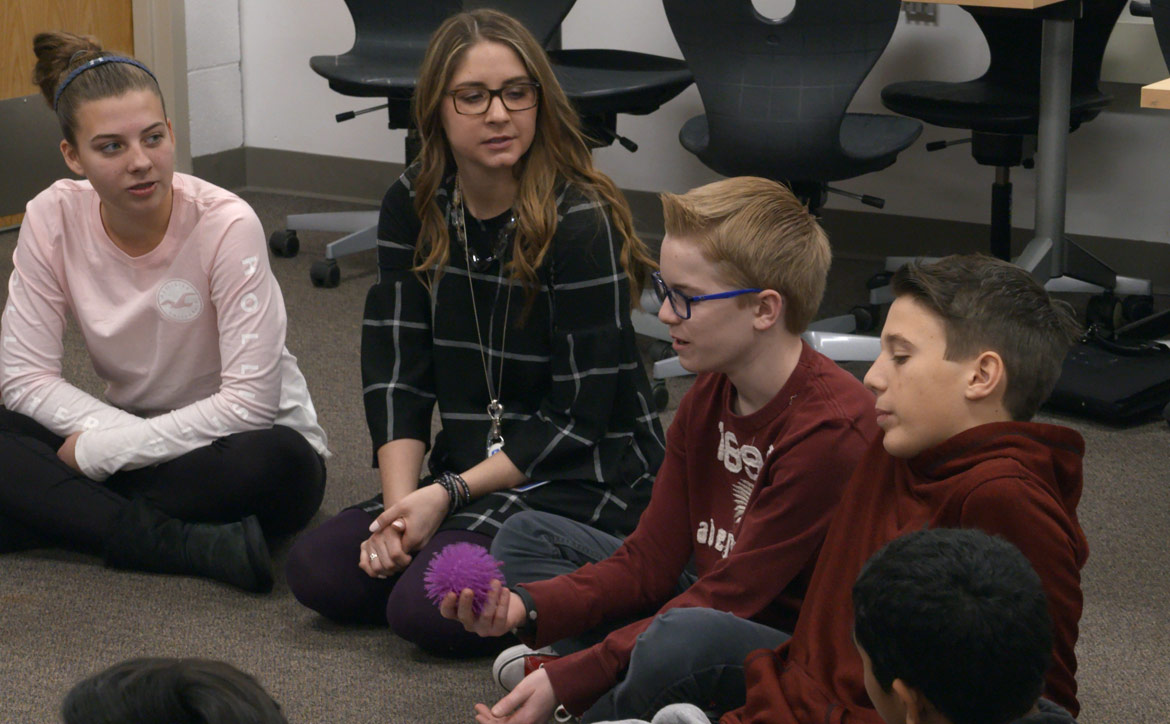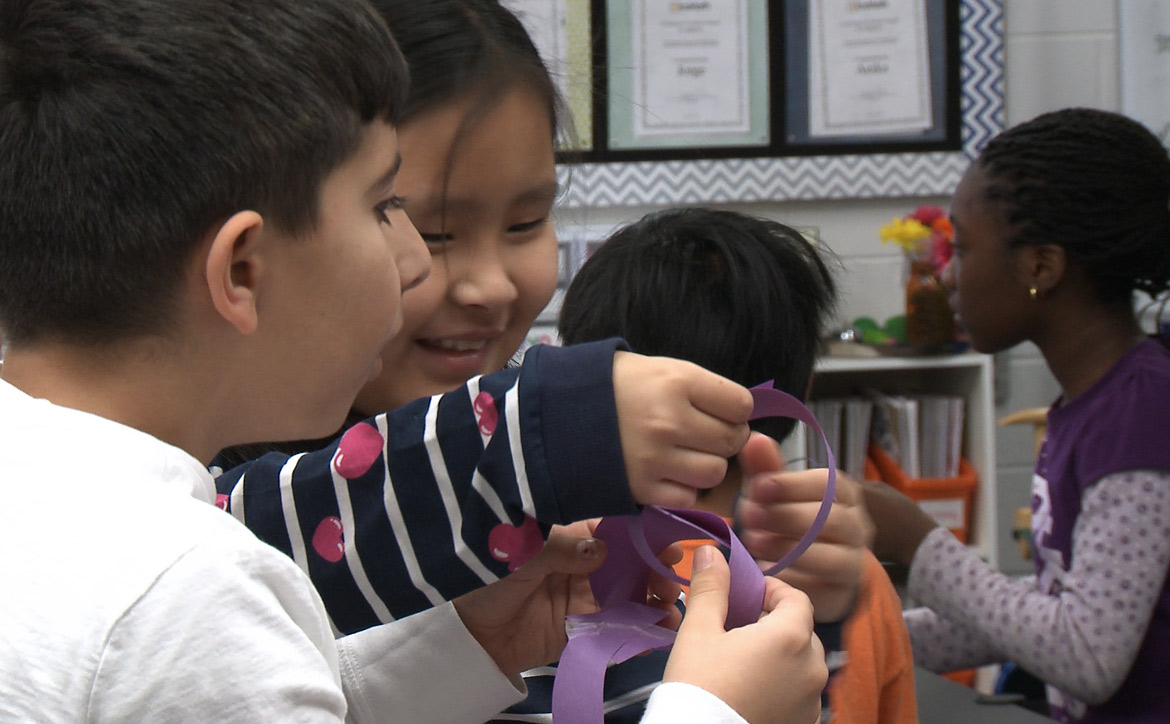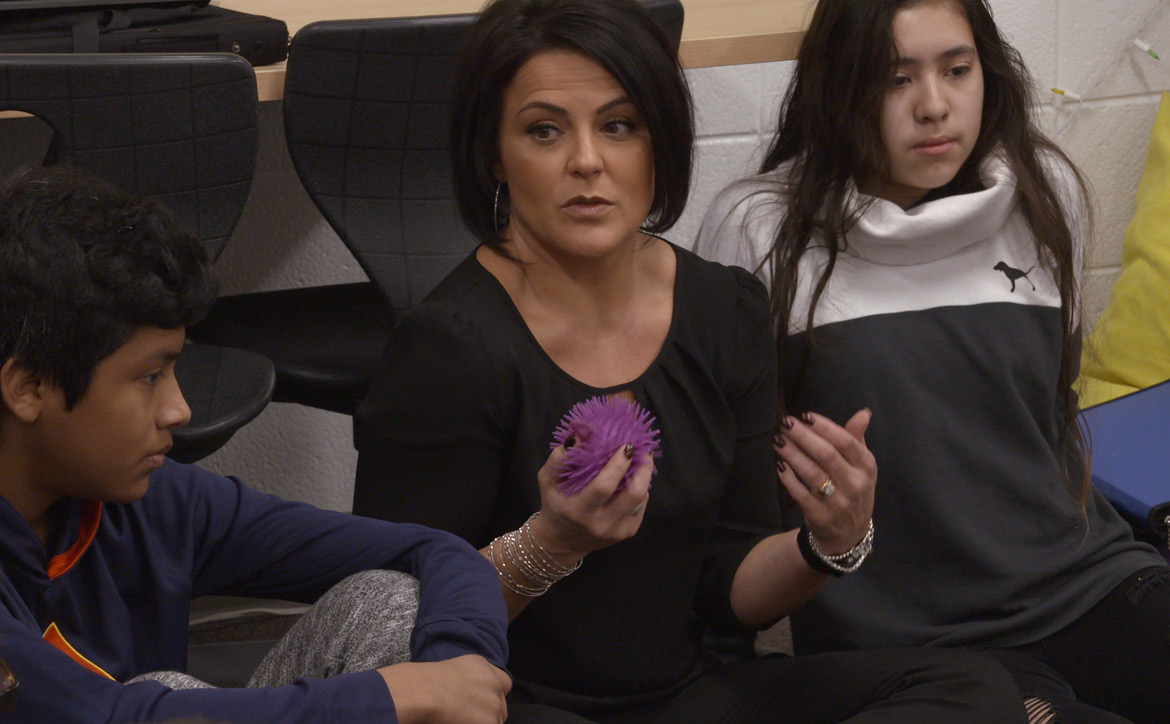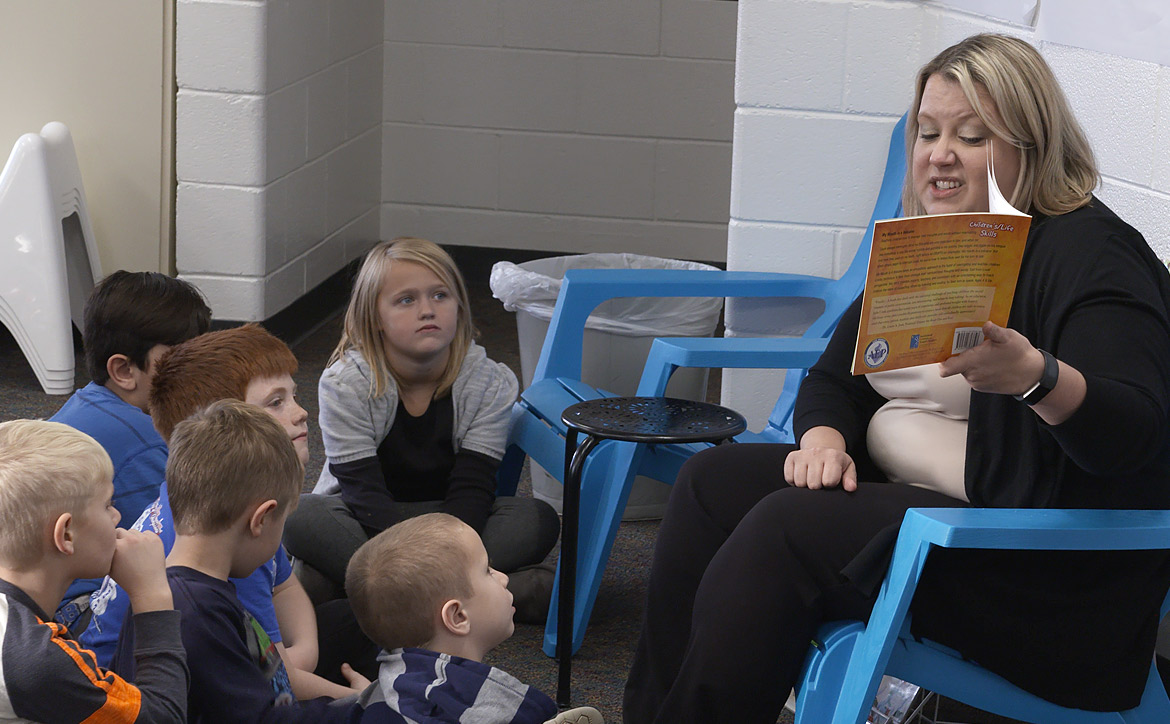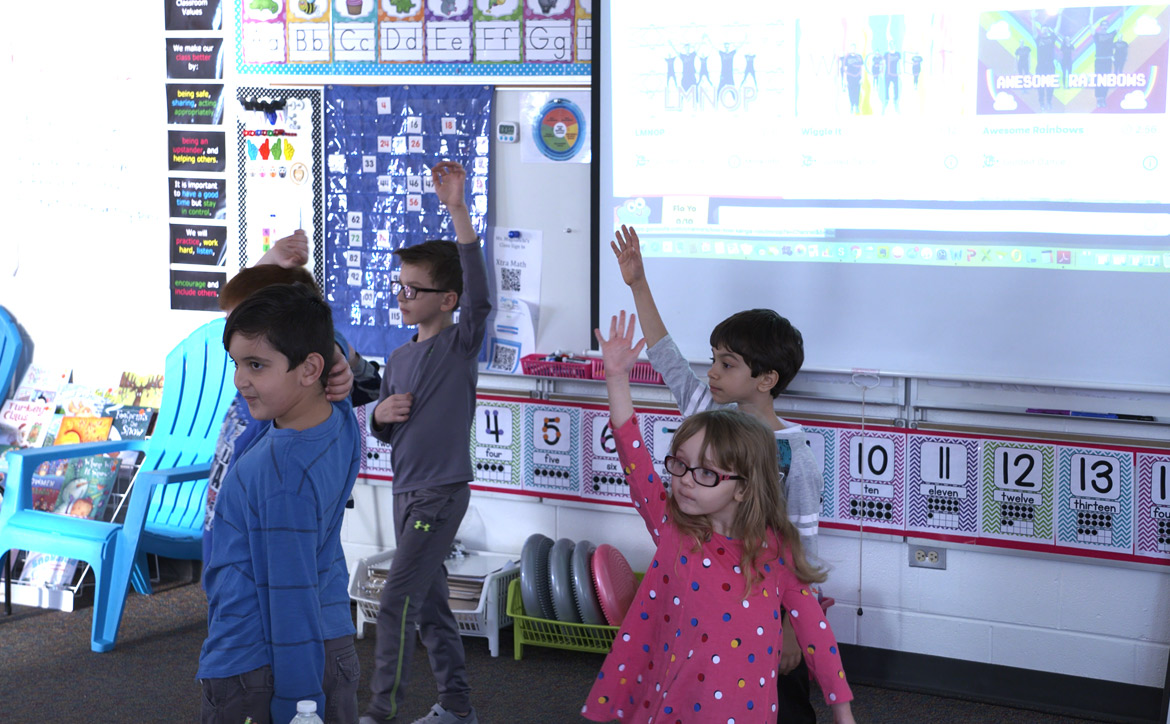Making social and emotional learning a resource priority
Community Consolidated School District 59 (District 59) in Arlington Heights, Illinois is a small school district serving about 7,000 students and covering 24 square miles. The district includes portions of a number of different towns in suburban Chicago, including Arlington Heights, Des Plaines, Elk Grove Village and Mount Prospect. The district has a significant number of English language learners – there are about 150 dual-language classrooms – and many different international cultures represented. Average income varies dramatically across the neighborhoods within the school system, but a healthy tax base funds a well-appointed school district, with renovated elementary schools, extensive technology infrastructure and relatively small class sizes.
With those resources, and strong support from the superintendent, District 59 has built a robust district-wide approach to social and emotional learning, supported by two full-time SEL leaders. The arc of District 59’s SEL implementation journey started with adult SEL trainings and conversations about growth mindset, and then expanded to include curricular supports and professional development to help with SEL instruction. To guide its administrative-level efforts, the district uses a four-part framework to guide teachers in implementing SEL: community building; skill instruction; embedded instruction; and disciplinary practice. While the implementation framework is not part of teachers’ daily practice, the pillars in the framework guide administrative efforts throughout the district and the key concepts are reflected in classrooms.
Student Focus Improvement
Student Listening Improvement
Teaching as learning: preparing to deliver SEL instruction
Teachers in District 59 draw on a unique level of support as they learn and hone their own SEL skills and ability to deliver great SEL instruction. As a result of a collective bargaining agreement in the school district, all teachers receive two hours of professional development every Wednesday (enabled by a one-hour early release for students) and they often spend this time on social and emotional learning. During these periods, teachers learn about SEL competencies, and they grow their understanding of strategies for teaching SEL and creating effective classroom environments. They also collaborate with other educators in their school to develop SEL lesson plans, for example, meeting in grade-level teams to create a direct instruction lesson on a competency, like self-management, that is a common priority for each of their classes.
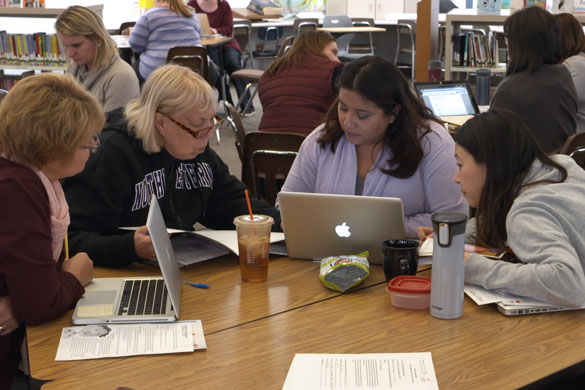
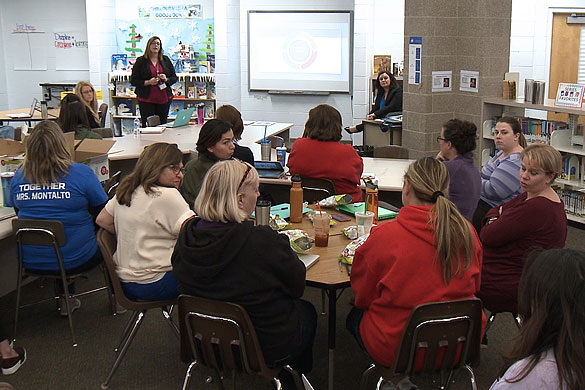
Although the district provides time and expert support – luxuries for educators learning a new way of teaching and guiding their students – it’s the teachers themselves who make the time valuable, bringing a spirit of candor and humor to these professional learning discussions. The district spent a year working on mindset theory with adults before rolling out SEL to students, and teachers draw on that personal knowledge about growth to share honest reflections with peers about what’s challenging and exciting about SEL in their classes, and ask questions as they consider the connections among texts, lesson plans and SEL skills.
“Because it can be something that is brand-new, or overwhelming, or even frustrating, having that growth mindset was an excellent pre-requisite to starting social and emotional learning.”
Outside of their professional learning time, teachers reach out to school- and district-based coaches to develop instruction based on students’ needs; to co-plan SEL lessons; and to model instruction. Together, teachers and coaches prioritize certain SEL competencies and then collaborate to build a lesson that will develop student skills. For example, they may use direct instruction on self-awareness to help students reflect on how the volume of their own voices might affect classmates working on a challenging math lesson. The only elements of SEL practice that are mandatory for teachers are Circles — a brief, daily practice that brings students together to build relationships, take turns sharing thoughts, and prepare for or debrief a lesson or school day — and one lesson on an SEL competency. Yet social and emotional learning skills, themes and strategies have fast become ingrained in practice for teachers across the district, as they see begin to see results for their students and classrooms.
What we learned from District 59
Student-Driven Instruction
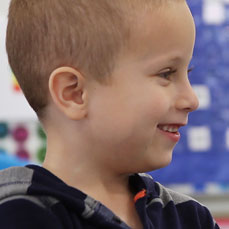
A hallmark of academic and SEL instruction in District 59 is students taking responsibility for their own learning. Teachers guide and facilitate the learning, instead of delivering a lesson: Whether in Circles or a hands-on activity illustrating and building an SEL skill, students are constantly talking to one another, practicing interactions and contributing their own ideas. In ways small, such as voting on the gestures and mnemonics their class will use to identify an abstract concept, and large, like generating and iterating a list of classroom values, students are empowered to identify how they’d like to be treated and how they will contribute to creating a healthy classroom environment.
Student agency, a key feature of instruction in District 59, shows how SEL can be integrated in pedagogy and classroom environment, which in turn supports SEL within the context of an academic curriculum. Often, “SEL integration” is understood to mean the infusion of SEL concepts or content into academic content like math or English Language Arts. District 59 teachers model how SEL instructional practices also can pave the way for students to engage in new ways of self-directed learning, like the Writer’s Workshop and Math Workshop models the district has recently rolled out. To be effective, these modern academic approaches require students to be capable of setting goals and organizing their time, to be aware and respectful of their classmates’ needs and to approach new academic content with self-efficacy and self-motivation. These are all SEL competencies that District 59 teachers work to build in their students. In addition, the agency and participation that students practice during SEL lessons create good habits for their hands-on academic learning.
Creatively Building Student Competencies
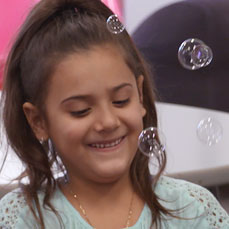
In classrooms across District 59, teachers and students are engaging in creative, hands-on SEL lessons. Students join teams and scramble to make a longer paper chain than their classmates, squirm as they resist the urge to pop bubbles floating by, or read funny stories about an elementary schooler erupting like a volcano. Each of these tasks is anchored in SEL competencies, and are part of direct instructional lessons that will help students build, and eventually master, SEL skills. Teachers start lesson planning by drawing on the CASEL competencies, identifying the competencies most relevant to their students. Based on the district-wide principle that teachers should be the designers on their own curriculum in all subject areas, these educators do not follow a formal or mandated SEL curriculum or scope and sequence. Yet they have extensive access to quality, research-based SEL instructional materials like Second Step and Skillstreaming, and to popular read-alouds with SEL themes by authors like Julia Cook. With support from district-based coaches and one another, they use those materials, along with district-created guides, to develop activities, discussion prompts, and guided questions. While there’s plenty of room for creativity along the way, most direct instruction lessons begin and end with Circles, as students reflect on what they’ve learned about the SEL skill being taught; practice new SEL vocabulary; and make connections to the academic work they will engage in throughout the rest of their school day.
Adapting and Customizing Instruction
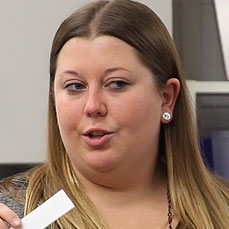
For educators in District 59, teaching is driven by a personal knowledge of each students’ needs and strengths. This personal knowledge is developed through SEL, especially daily practices like Circles that help build authentic relationships between teachers and students. And in turn, this personal knowledge shapes all SEL and academic instruction. Teachers are constantly adjusting their planning – deciding which CASEL competencies to focus on, which strategies they will emphasize, and what materials they will use – based on the needs of their individual students and their class as a whole.
Those needs aren’t just identified through teachers’ intuition. Teachers gather data, such as pre- and post-assessments, to evaluate how their students’ SEL skills are developing. They “conference” with other teachers about how individual students are progressing on their academic and SEL growth paths. At the middle school level, where students have multiple teachers, those teachers work as a team to document different interventions using shared tools like Google Docs. And teachers invite in school- and district-based coaches to their classrooms to demonstrate and observe lessons so that they have a partner in reflecting about whether students are truly mastering an SEL concept.
As a result of all this data-gathering and analysis, SEL instruction in District 59 feels personal: Teachers communicate to their students why they are studying and engaging with a particular SEL skill or concept, and they can effectively adapt their SEL instruction for smaller and larger classes and students who may be at different levels of their social and emotional development.
Try this at home: tools from District 59 for teachers and administrators
Throughout District 59, teachers “start with the standards”: SEL instructional materials and professional learning experiences are grounded in CASEL’s Core Competencies. Teachers and administrators develop creative lessons and apply detailed reflection guides to help their students learn these important competencies. Their tools can be adapted for other classrooms and schools.
Ms. Deren’s Lesson on Teamwork and Relationship Building
This lesson was created by Jessica Deren, a 3rd-grade teacher at Brentwood Elementary. Designed to help further students’ understanding and mastery of a core SEL competency, Relationship Skills, the lesson weaves together Circle Keeping – a regular practice throughout District 59 – with a student-centered activity and a reflection exercise to help students synthesize what they learned.
School Cultural Responsiveness Self-Reflection Guide
From schools and districts as diverse as District 59, cultural responsiveness is a critical element of SEL and school climate. This guide helps educators and administrators reflect in a substantive way on their progress towards an important but often difficult-to-measure goal – and is easily adapted to your school and district context.
SEL Lesson Planning Guided Exercise
This guided exercise, from a professional learning workshop at District 59’s Frost Elementary School, assists teachers in developing a lesson plan to support students’ development of a particular SEL skill or competency they have chosen. Teachers in District 59 often draw on Julia Cook’s read-aloud books in developing their SEL lessons, but the exercise may be adapted for use with any grade-level appropriate text with SEL themes.
Additional Resources
Although many of the materials and tools in use by District 59 teachers are customized, these educators do draw on standards and practices validated nationally. To learn more about some of the research and thinking that provides a foundation for their SEL teaching practice, explore these resources:
CASEL Core Competencies
These visuals and descriptions summarize CASEL’s integrated framework for student (and adult) “intrapersonal, interpersonal, and cognitive competence,” providing a helpful foundation for teachers at each stage of their SEL teaching journey.
View Resource
CASEL Teaching Activities to Support the Core Competencies
Ready to begin integrating the core competencies in your instructional practice? The CASEL Teaching Activities guide offers prompts, lesson ideas and pedagogical techniques.
View Resource
Center for Restorative Process’ Restorative Circles Lesson Plan
Circles are a foundational practice in every District 59 classroom; the idea and key features of classroom Circles draw from the field of Restorative Justice, an increasingly recognizable concept in K-12 classrooms across the United States. This lesson plan from the Center for Restorative Process offers a helpful introduction to what Circles are and how to integrate them into your school day.
View Resource
